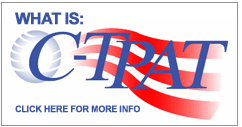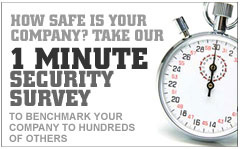It’s no secret that the warehousing and transportation industry has been hit hard with rising costs and shrinking profit margins. With experts projecting an extended economic recovery, logistics executives are struggling with some difficult financial decisions.
The knee jerk reaction of some when it comes to asset protection has been to arbitrarily cut spending. However, many companies have learned a painful lesson, which is this: in tough economic times, security risks can be significantly higher than in normal times.
Because employees are now faced with the harsh realities of wage freezes, overtime elimination, benefit reductions, and possible job cuts, a percentage adopt the mindset that puts them in an adversarial position with their companies. When faced with rising personal expenses and reduced income, many look for an alternative means of financial support.
Employees can become resentful and sometimes even vindictive as they perceive management’s cost cutting initiatives not as a financial necessity, but as a personal attack. A percentage of the workforce may then adopt the mindset of “I’m going to do it to them before they do it to me.” Consequently, many companies have experienced an increase in both the number of security related problems they’ve incurred as well as an escalation in inventory theft.
One distributor that recently contacted us had experienced their highest single spike in inventory shrinkage in the last 15 years. Another company was recently victimized for over $240,000 in theft related losses by a group of long term employees who admitted they had never resorted to dishonesty prior to the last six months.
What oftentimes enables these types of crimes to take place are the reductions that some companies have made to their loss prevention programs, which have created new opportunities for individual theft, fraud and collusion, not to mention product tampering and sabotage.
Many senior executives have asked me the best way to balance the pressures of making needed cost reductions and the increased risk of security threats that many companies find themselves facing. My response to this question is to search for innovative ways to reduce their security expenditures without increasing their exposure to security threats.
One illustration of how this can be accomplished involves a company that has eight locations and one new facility on the drawing board. After carefully analyzing their security expenditures, we questioned why they intended to spend the sum they budgeted for the proposed video system in their new distribution system.
The cost for the CCTV system was, in our opinion, approximately $32,000 more than we thought it needed to be. As it turned out, this cost factor was being driven by their desire for pan/tilt/zoom (P/T/Z) cameras. When we questioned why they thought they needed them, rather than using fixed position cameras, it became apparent that there was not a well thought out reason for their selection. Essentially they were going in this direction because that’s what they had in their existing facilities.
We pointed out the inadequacies of using Pan/Tilt/Zoom cameras in their type of operating logistics. After listening to our rational, they agreed with our logic. We also explained that fixed cameras were not only a fraction of the cost, but how they would actually provide them with a higher level of security. Avoiding P/T/Z cameras would also save them money on repairs, being that fixed cameras have fewer moving parts and require far less service.
By utilizing the cameras we recommended, as well as substituting the type of digital video recorders their vendor had proposed with a model that we knew was of equal quality (but without some bells and whistles that we considered unnecessary), we were able to cut their capital investment by more than 52%.
Another illustration involved a company that was spending in excess of $2.8 million dollars a year in guard service for their facilities in North America. After a study of their operating logistics and visiting several of their sites, we explained that all their facilities could be effectively protected and monitored from one central location if they utilized the right technology and security practices. The savings, even with the investment needed for the new technology, will exceed $1 million in the first year alone.
In a difficult economy, necessity does demand innovation. Rather than arbitrarily cutting budgets with a broad ax, which can end up costing far more, savvy executives have learned that there are oftentimes ways to strategically reduce expense without increasing risk.



